JACKSONVILLE, Fla. – Did you know the Jacksonville Beach Pier opened an amusement park in 1926? Or that The Florida Theatre opened in 1927 on the corner of Forsyth and Newnan Streets and was valued at $1.5 million?
Jacksonville’s bicentennial celebration is scheduled for June 11. The Jacksonville Historical Society is celebrating the city’s bicentennial with photos and information from the archives on Jacksonville’s past. The photos really tell a story of how Jacksonville came up to become the amazing city it is today.
Recommended Videos
Let’s take a dive back to the 1800s.
Related: Bicentennial Bell: Special landmark could be heading to Jacksonville | City announces plans for Jacksonville’s bicentennial | Remember? Snowstorm hits Jacksonville in December 1989 | Looking back: Jacksonville once favorite tourist haven for entire eastern U.S.
On Feb. 9, 1832, the city of Jacksonville was incorporated. William J. Mills was the city’s first mayor, serving approximately 100 residents for three years. This likeness, called an ambrotype, was taken in 1855 and is one of the rarest images in the Wayne W. Wood Collection of the Jacksonville Historical Society. (See photo below)
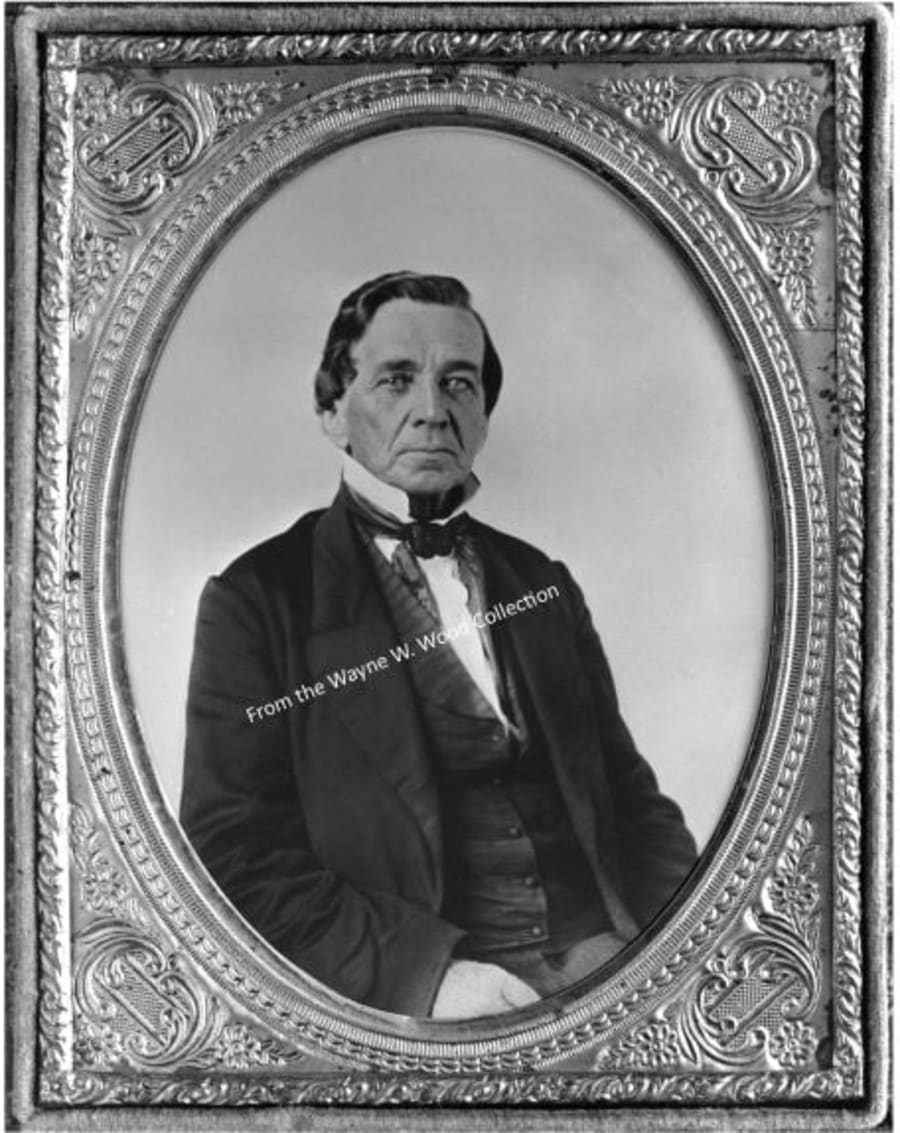
In 1864, Union troops from the Fourth Federal occupied Jacksonville -- congregating in this image at the corner of Bay and Ocean Streets (today the site of a parking garage on the west corner and Cowford Chophouse on the east corner). In the foreground is the St. Johns River and a crude dock. (From The Jacksonville Family Album & Jacksonville Historical Society)
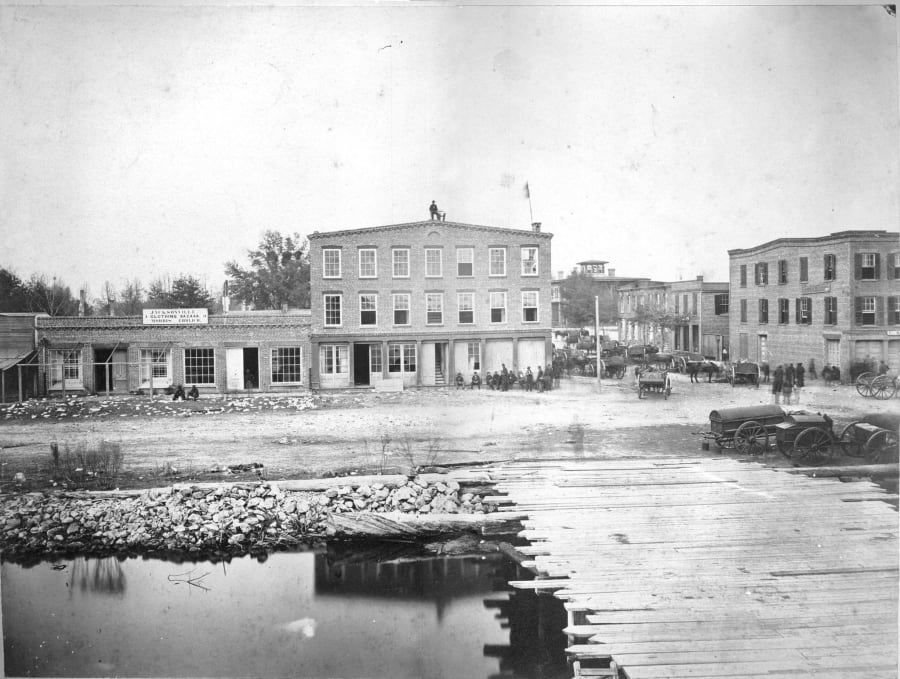
The Times newspaper purchases The Union in 1883 to create The Florida Times-Union and Citizen. Their offices were here in the Astor Building (built in 1878 at a cost of $100,000), at the corner of Bay & Hogan Streets from 1900 to 1911. On the day after the Great Fire of May 3, 1901, the heads of all municipal government bodies met in the T-U’s office to keep the framework of government and city services intact while the recovery process unfolded. (Photo from JHS Archive)
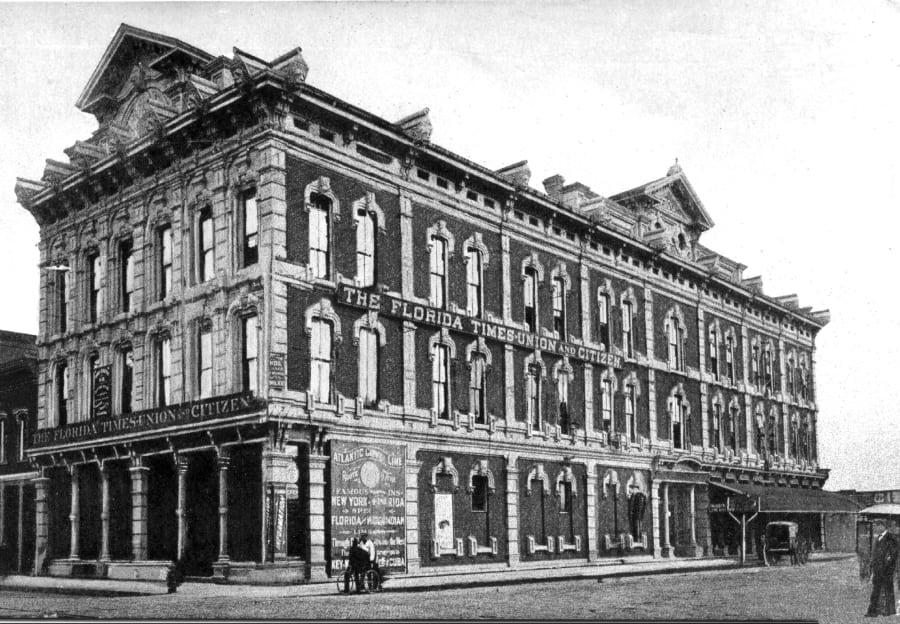
The Jacksonville Historical Society said that on Thanksgiving Day, 1886, the first ship arrived at the wharf of the Clyde Steamship Co. located at the foot of Hogan Street. Ships departed three days a week bound for the Carolinas and other points along the Atlantic Coast.
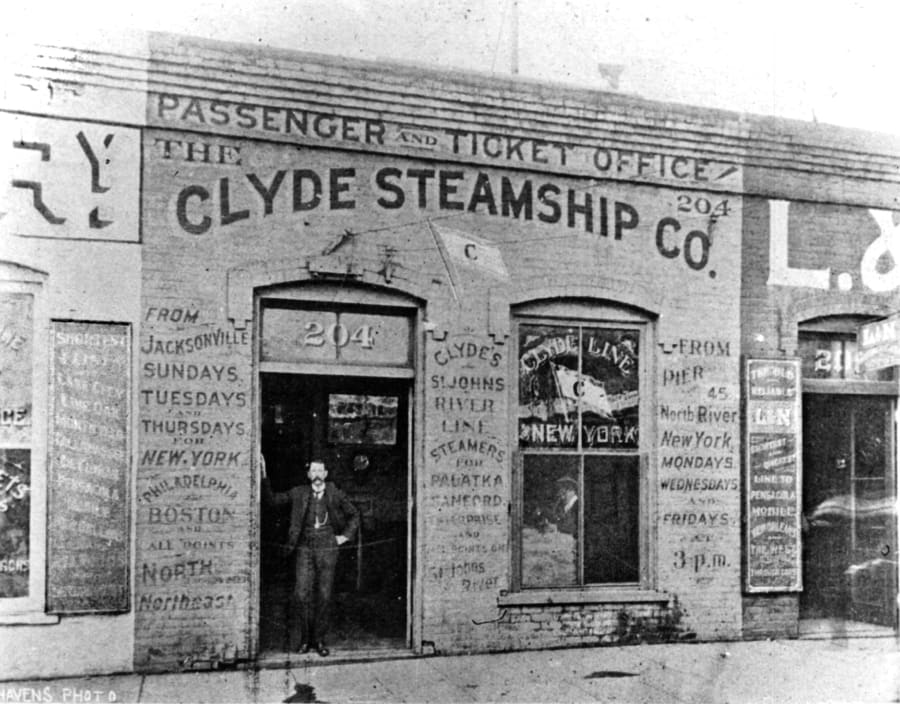
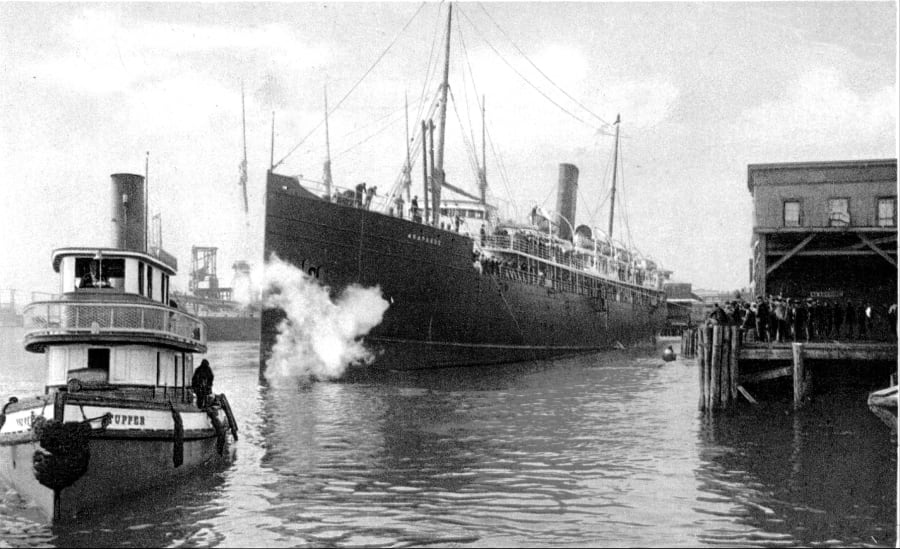
Gallery: Treasures from the archives: Check out these vintage photos of Jacksonville
This is a photo of the welcome banner for President Grover Cleveland when he visited Jacksonville in 1888 during the Sub-Tropical Exposition. (Photo from JHS Archive)
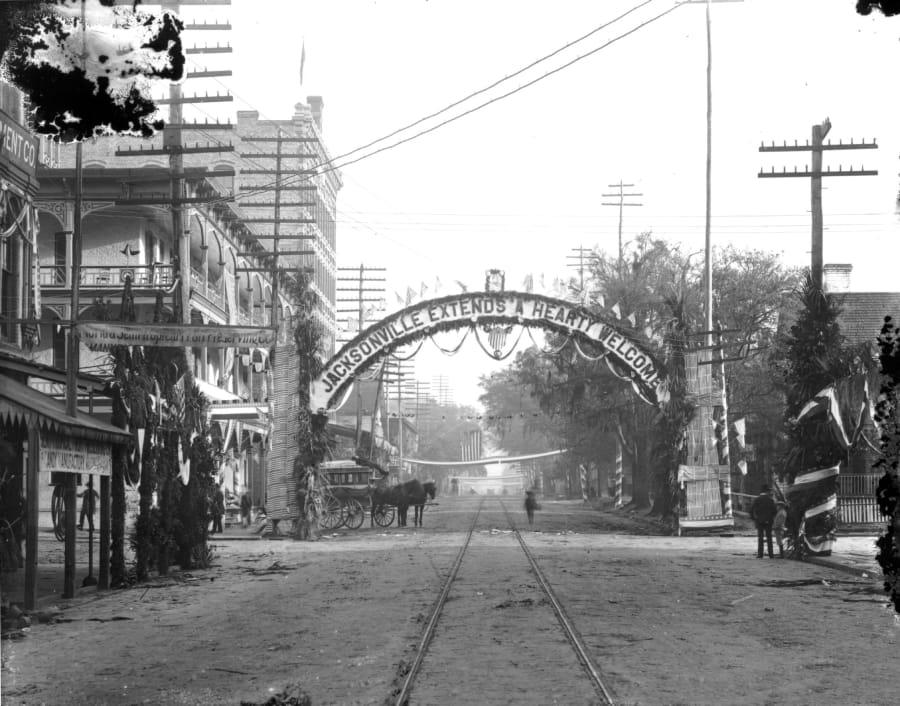
In 1903, the Florida Automobile Association was established in Jacksonville. (Photo from JHS Archive)

Oliver Hardy clowns around with Kate Price for a VIM Comedies promotion in front of the San Juline condominiums on Riverside Avenue, circa 1915. (Image from The Jacksonville Family Album: 150 Years of Photography)
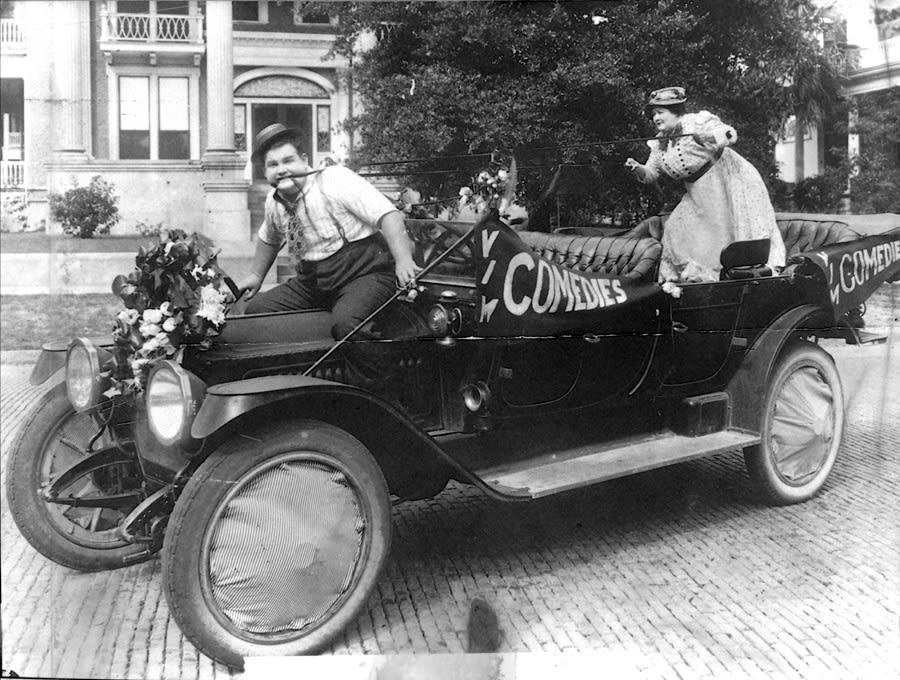
In August of 1926, W.H. Adams Sr. opened the Ocean View Pavillion amusement park near the Jacksonville Beach Pier. His dream at the time was to build a roller coaster that would rival the iconic Cyclone at Coney Island, which opened in 1927. Construction began in 1928 by the Miller and Rose Amusement Co. of Milwaukee and it was completed in 1929. At an impressive 93 feet, it was the tallest structure at the beach. It was also the first roller coaster in the state of Florida. The attraction delighted beachgoers for decades until it was deemed unsafe and dismantled in 1950. (Photo: Jacksonville Historical Society)

The Florida Theatre opened on April 8, 1927, on the corner of Forsyth and Newnan Streets. The seven-story concrete, the fireproof theater was valued at $1.5 million. The most famous live performance there was by Elvis Presley in August 1956. (Photo from JHS Archive)
Related: Shedding light on history of Sally Dark Rides in Jacksonville

This clipping features Babe Ruth (center row, far left) in South Jacksonville’s Rose Field during spring training in March 1920. The ballpark was in Dixieland Park on the South Bank and was briefly called Rose Field when our local team was the Jacksonville Roses. Mayor John Martin asked businesses to close early and increased ferry service to get to the games. Legend also has it that St. Elmo “Chic” Acosta was so tired of taking the ferry across the river to watch games he lobbied for the bridge that now bears his name.

In April 1939 President Franklin D. Roosevelt signed a bill appropriating $66.8 million for a naval air station program, of which $15 million was committed to Jacksonville. On March 20, 1941, FDR visited to inspect the new $25 million Naval Air Station, which was commissioned on October 15, 1940. (Photos courtesy of the Naval History and Heritage Command)
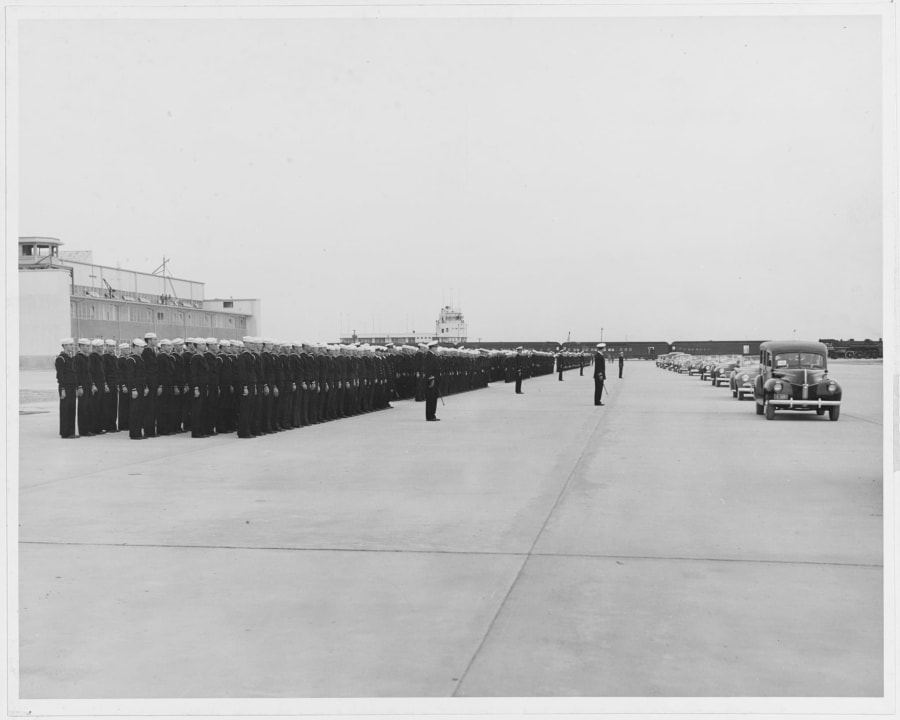
Did you know? Craig Airport, built in 1946, was named for Jacksonville native James Edwin Craig (1901-1941), a naval aviator and lieutenant commander in World War II who was killed in action on Dec. 7, 1941, during the attack on Pearl Harbor. His younger brother, Cmdr. John Rich Craig, also served in the Navy and was reported missing in action on March 22, 1943, while serving aboard the submarine USS Grampus.
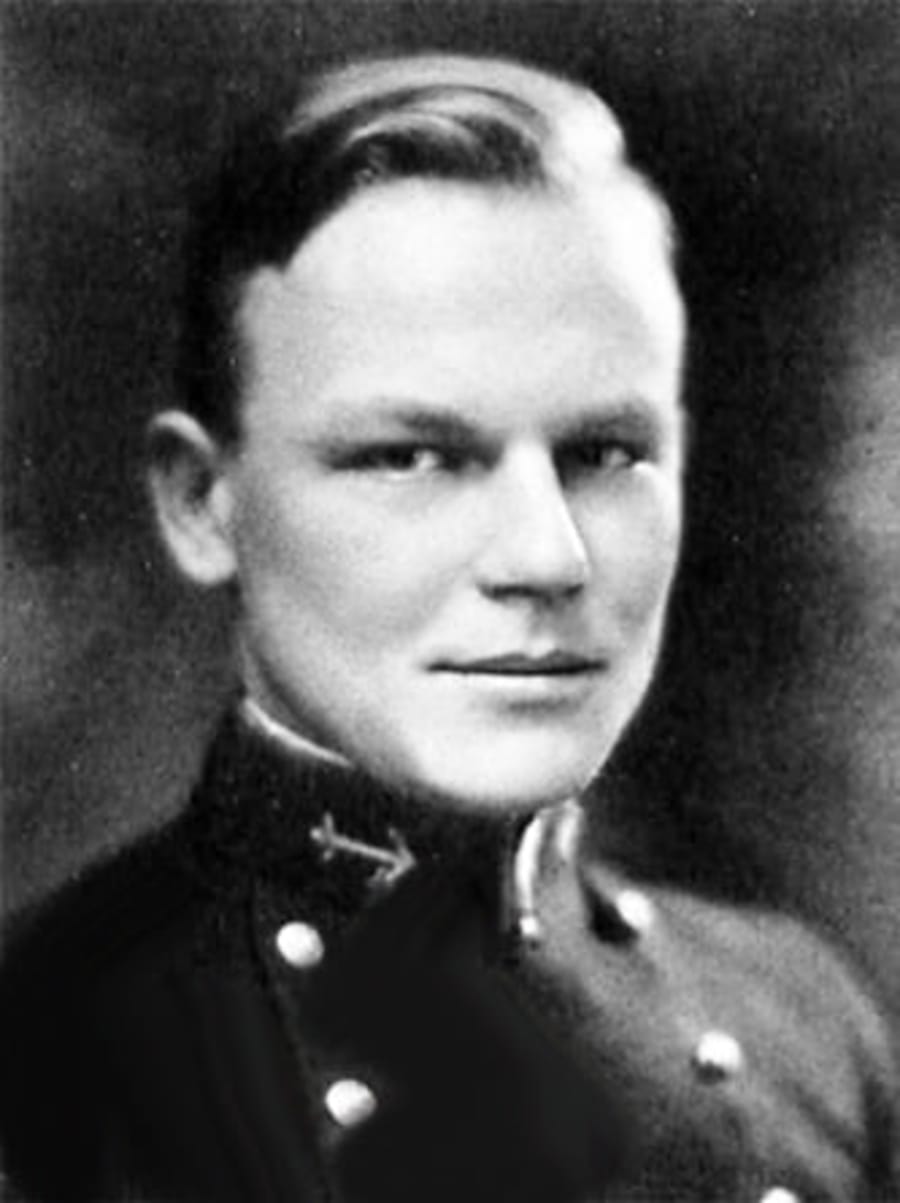
In 1907, Dixieland Park opened in South Jacksonville to draw winter tourists from the North. It sat on 21 acres with 1,100 feet of riverfront and offered a 160-foot bamboo slide, animal shows, daredevil attractions, silent film shows, ostrich races, and aerial rides. Nearby Treaty Oak was illuminated. By 1917, the park was gone.

Recognize this spot in downtown Jacksonville? The world’s largest and tallest fountain, when it opened in 1965, was Friendship Fountain. Designed by Jax architect Taylor Hardwick, its three pumps could push 17,000 gallons of water per minute up to 100 feet in height. The 14-acre Friendship Park was donated by the Southside Business Men’s Club.
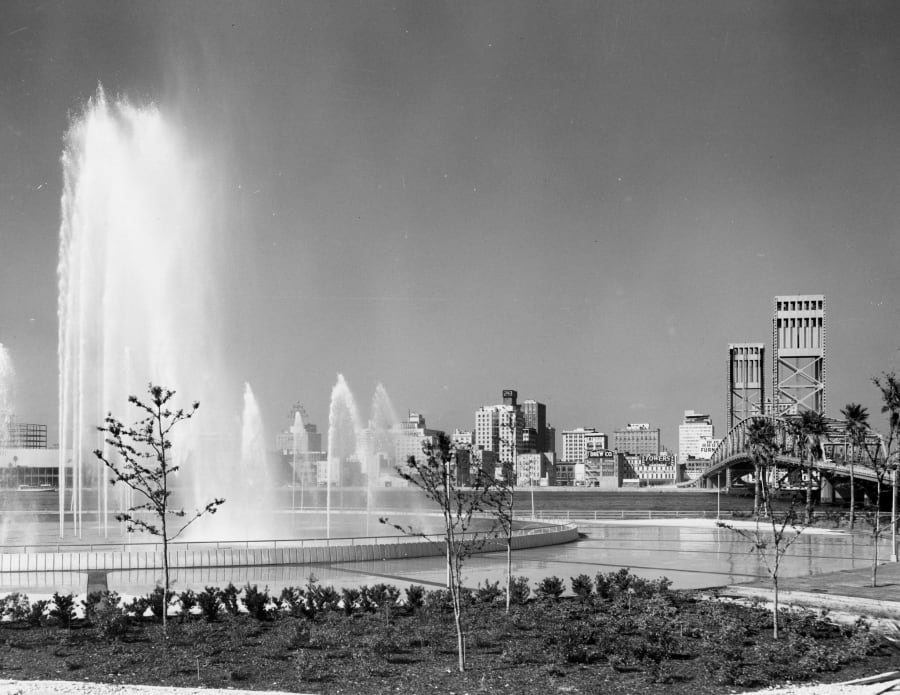
Do you remember when it snowed in Jacksonville? The Christmas of 1989 was one to remember in Jacksonville with so much snow sticking to the ground people sledded down the Dames Point Bridge.
GALLERY: Locals share snow photos 30 years after a white Christmas in Jacksonville

Do you have any old photos of Jacksonville you would like to share with News4JAX? Upload your photos to SnapJAX or email them to WebTeam@wjxt.com.
Click here to see more photos and to read more about Jacksonville’s history. Be sure to follow the Jacksonville Historical Society on Facebook.



